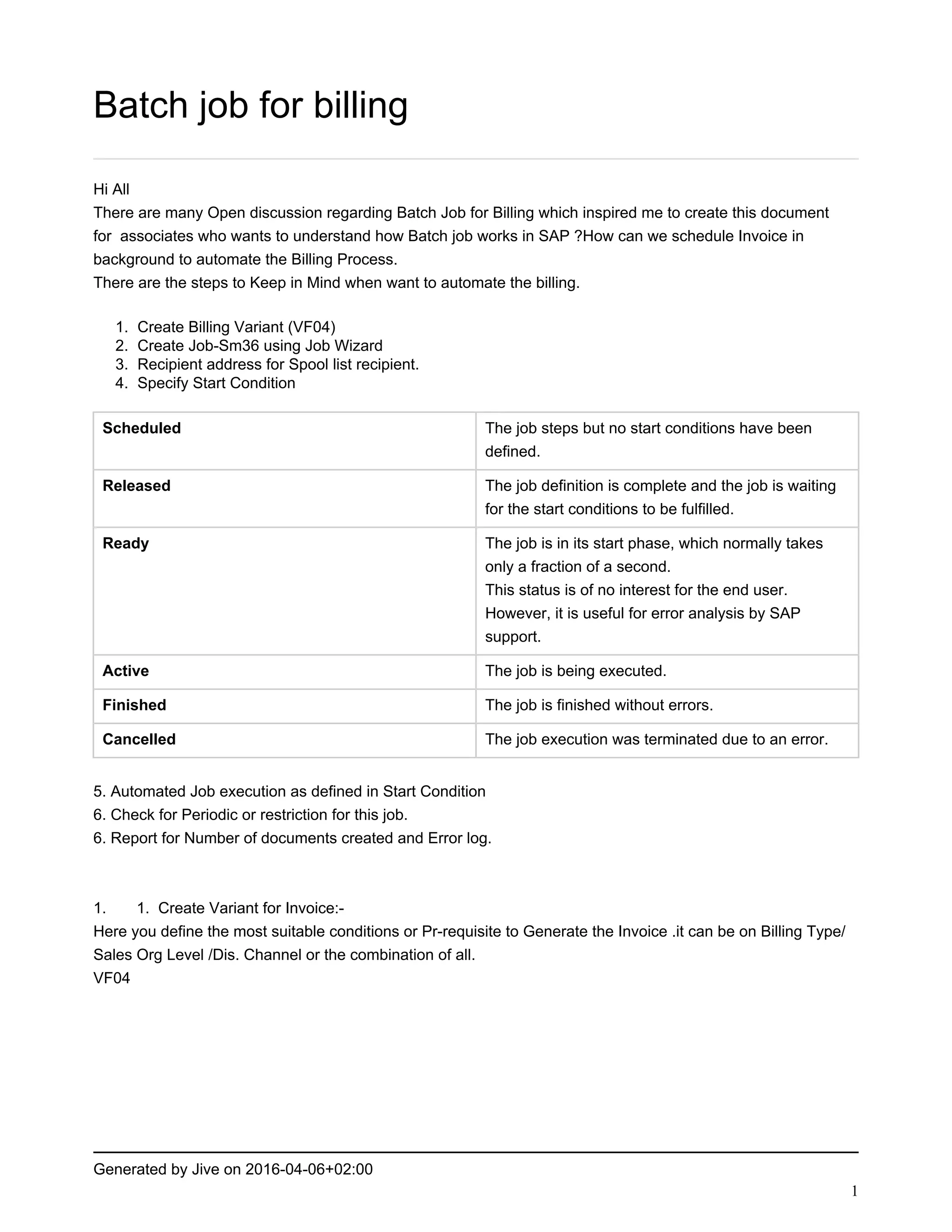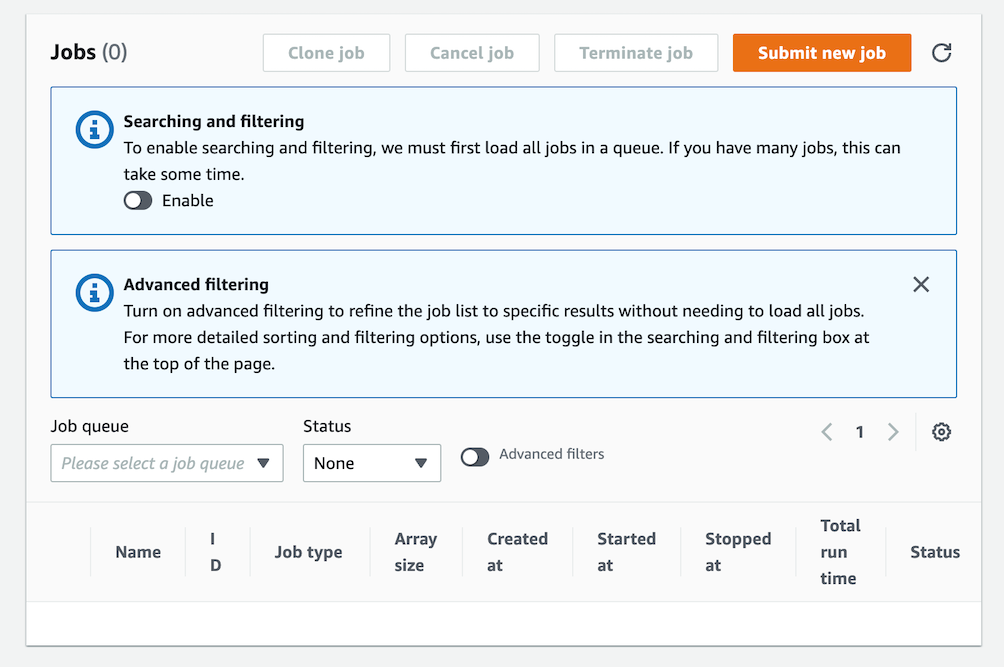Hey there tech enthusiasts, if you're diving into the world of IoT and remote job processing, you've landed at the right place. Let's talk about remoteiot batch job example and how it can revolutionize the way you manage data. Imagine having a system that automates your repetitive tasks, freeing up your time to focus on more important stuff. That’s exactly what remote IoT batch processing brings to the table. Let’s dive right in, shall we?
Nowadays, with the rise of smart devices and the Internet of Things (IoT), businesses are generating massive amounts of data. Managing this data efficiently is crucial, and that's where remote IoT batch jobs come in. These jobs help process large datasets in the background without interfering with your daily operations. So, whether you're a developer or just someone curious about tech, this guide will break down everything you need to know.
Before we get into the nitty-gritty, let me tell you why understanding remote IoT batch jobs is essential. In a world driven by data, being able to process it effectively can make or break your business. By the end of this article, you'll not only understand what remote IoT batch jobs are but also how to implement them in your projects. Let's get started!
Read also:How Big Is A 9 Inch Pizza Unveiling The Size Slices And Savory Secrets
Here's a quick navigation to help you jump around the article:
- What is RemoteIoT Batch Job?
- Why Use Batch Processing?
- Benefits of RemoteIoT Batch Processing
- Common Use Cases
- Implementing a Batch Job
- Tools and Technologies
- Best Practices
- Troubleshooting Tips
- The Future of RemoteIoT
- Conclusion
What is RemoteIoT Batch Job?
Alright, let's start with the basics. A remote IoT batch job is essentially a process that handles large volumes of data in a single operation. Instead of processing data in real-time, these jobs collect data over a period and then process it all at once. Think of it like baking a batch of cookies – you gather all your ingredients, mix them together, and bake them in one go.
RemoteIoT batch jobs are particularly useful when dealing with IoT devices. These devices generate tons of data, and processing it all in real-time can be resource-intensive. By using batch processing, you can schedule tasks to run during off-peak hours, saving both time and resources.
How Does It Work?
Here’s a quick rundown of how remote IoT batch jobs work:
- Data Collection: IoT devices gather data from various sources.
- Data Storage: The collected data is stored in a database or cloud storage.
- Scheduling: A batch job is scheduled to run at a specific time.
- Processing: The job processes the data according to predefined rules.
- Output: The processed data is stored or sent to the desired destination.
Why Use Batch Processing?
Now, you might be wondering why you should bother with batch processing when real-time processing seems cooler. Well, here’s the deal. Batch processing offers several advantages that make it a great choice for certain scenarios:
First off, it’s cost-effective. Running large-scale data processing in real-time can be expensive, especially if you’re dealing with limited resources. Batch processing allows you to optimize resource usage by scheduling jobs during off-peak hours when server loads are lower.
Read also:Izzie Balmer Wikipedia The Ultimate Guide To Her Life Career And Achievements
Secondly, it’s reliable. Since batch jobs are scheduled, they can be monitored and retried in case of failures. This ensures that your data is processed accurately and consistently.
When to Use Batch Processing?
Batch processing is ideal for tasks that:
- Involve large datasets.
- Don’t require immediate results.
- Can be scheduled during off-peak hours.
Benefits of RemoteIoT Batch Processing
Let’s talk about the good stuff. RemoteIoT batch processing offers a ton of benefits that make it a game-changer for businesses. Here are some of the key advantages:
Efficiency: By processing data in batches, you can handle more data in less time. This means you can focus on other important tasks without worrying about data processing.
Scalability: As your business grows, so does the amount of data you generate. RemoteIoT batch processing can easily scale to handle increasing data volumes without a hitch.
Cost-Effectiveness: As mentioned earlier, batch processing is a budget-friendly solution. It optimizes resource usage and reduces the need for expensive real-time processing systems.
Other Perks
Here are a few more benefits worth mentioning:
- Improved accuracy: Batch jobs can be tested and refined before deployment, ensuring better results.
- Flexibility: You can customize batch jobs to meet your specific needs.
- Security: Scheduling jobs during off-peak hours reduces the risk of data breaches.
Common Use Cases
Now that you know why remote IoT batch processing is awesome, let’s look at some common use cases:
Data Aggregation
IoT devices generate tons of data, and aggregating this data can be a challenge. Batch processing makes it easy to collect data from multiple sources and summarize it into meaningful insights.
Reporting
Generating reports from large datasets can be time-consuming. With batch processing, you can automate the report generation process, saving you a ton of time.
Machine Learning
Machine learning models require large amounts of training data. Batch processing can help prepare this data by cleaning, transforming, and organizing it for use in machine learning algorithms.
Implementing a Batch Job
Alright, let’s get our hands dirty and talk about how to implement a remote IoT batch job. Here’s a step-by-step guide:
Step 1: Define Your Requirements. Figure out what data you need to process and what the end goal is.
Step 2: Choose the Right Tools. There are several tools and technologies available for batch processing. We’ll talk more about this in the next section.
Step 3: Set Up Your Environment. Configure your servers, databases, and other infrastructure needed for batch processing.
Step 4: Write Your Batch Job. Use a programming language like Python or Java to write your batch job script.
Step 5: Schedule Your Job. Use a scheduler like cron or Apache Airflow to schedule your batch job.
Step 6: Test and Optimize. Test your batch job to ensure it works as expected and optimize it for performance.
Tips for Implementation
Here are a few tips to help you implement your batch job successfully:
- Start small and scale up gradually.
- Monitor your job’s performance regularly.
- Document your process for future reference.
Tools and Technologies
When it comes to remote IoT batch processing, there are several tools and technologies you can use. Here are some of the most popular ones:
Apache Spark
Apache Spark is a powerful tool for big data processing. It’s fast, scalable, and supports a wide range of programming languages.
Apache Airflow
Apache Airflow is a great choice for scheduling and monitoring batch jobs. It provides a user-friendly interface and integrates with various tools and platforms.
Amazon Web Services (AWS)
AWS offers several services for batch processing, including AWS Batch and AWS Lambda. These services provide scalable and cost-effective solutions for batch processing.
Best Practices
To ensure your remote IoT batch jobs run smoothly, here are some best practices to follow:
Keep Your Data Clean. Garbage in, garbage out. Make sure your data is clean and well-organized before processing it.
Monitor Your Jobs. Regularly monitor your batch jobs to catch any issues early on.
Optimize Your Code. Write efficient code to minimize processing time and resource usage.
Additional Tips
Here are a few more tips to keep in mind:
- Use version control for your code.
- Document your processes thoroughly.
- Test your jobs in a staging environment before deploying them.
Troubleshooting Tips
Even with the best planning, things can go wrong. Here are some troubleshooting tips to help you resolve common issues:
Check Your Logs. Logs can provide valuable insights into what went wrong and how to fix it.
Verify Your Data. Make sure your data is correct and complete before processing it.
Test Your Code. Test your code thoroughly to ensure it works as expected.
Common Issues
Here are some common issues you might encounter:
- Data inconsistencies.
- Performance bottlenecks.
- Scheduler misconfigurations.
The Future of RemoteIoT
As technology continues to evolve, the future of remote IoT batch processing looks bright. With advancements in AI and machine learning, batch processing will become even more efficient and intelligent. We can expect to see more automated systems that can handle complex tasks with minimal human intervention.
Moreover, the rise of edge computing will allow for more decentralized data processing, reducing latency and improving overall performance. This will open up new possibilities for remote IoT batch processing, making it an even more valuable tool for businesses.
Conclusion
And there you have it, folks. RemoteIoT batch job example is more than just a buzzword; it’s a powerful tool that can transform the way you manage data. By understanding its benefits, use cases, and implementation techniques, you can harness its full potential to drive your business forward.
So, what are you waiting for? Dive into the world of remote IoT batch processing and see how it can revolutionize your workflow. And don’t forget to share your thoughts and experiences in the comments below. Let’s keep the conversation going!
Until next time, stay tech-savvy and keep innovating!


